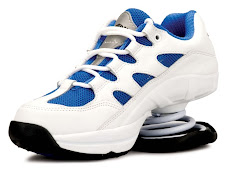 The American Podiatric Medical Association offers the following tips for preventing foot pain:
The American Podiatric Medical Association offers the following tips for preventing foot pain:• Don’t ignore foot pain — it’s not normal. If the pain persists, see a doctor who specializes in podiatry.
• Inspect feet regularly. Pay attention to changes in color and temperature. Look for thick or discolored nails (a sign of developing fungus), and check for cracks or cuts in the skin. Peeling or scaling on the soles of feet could indicate athlete’s foot. Any growth on the foot is not considered normal.
• Wash feet regularly, especially between the toes, and dry them completely.
• Trim toenails straight across, but not too short. (Cutting nails in corners or on the sides increases the risk for ingrown toenails.)
• Make sure shoes fit properly. Purchase new shoes later in the day when feet tend to be at their largest, and replace worn out shoes as soon as possible.
• Select and wear the right shoe for specific activities (such as running shoes for running).
• Alternate shoes. Don’t wear the same pair of shoes every day.
• Avoid walking barefoot, which increases the risk for injury and infection. At the beach or when wearing sandals, always use sunblock on your feet, as you would on the rest of your body.
• Be cautious when using home remedies for foot ailments. Self-treatment can often turn a minor problem into a major one.
• It is critical that people with diabetes see a podiatric physician at least once a year for a checkup. People with diabetes, poor circulation, or heart problems should not treat their own feet, including toenails, because they are more prone to infection.
Preventing Foot Problems in Childhood
 • Early Development. The first year of life is important for foot development. Parents should cover their babies’ feet loosely, allowing plenty of opportunity for kicking and exercise. Change the child’s position frequently. Children generally start to walk at 10 – 18 months. They should not be forced to start walking early. Wearing just socks or going barefoot indoors helps the foot develop normally and strongly and allows the toes to grasp. Going barefoot outside, however, increases the risk for injury and other conditions, such as plantar warts.
• Early Development. The first year of life is important for foot development. Parents should cover their babies’ feet loosely, allowing plenty of opportunity for kicking and exercise. Change the child’s position frequently. Children generally start to walk at 10 – 18 months. They should not be forced to start walking early. Wearing just socks or going barefoot indoors helps the foot develop normally and strongly and allows the toes to grasp. Going barefoot outside, however, increases the risk for injury and other conditions, such as plantar warts.• Shoes. Children should wear shoes that are light and flexible, and since their feet tend to perspire, their shoes should be made of materials that breathe. Replace footwear every few months as the child’s feet grow. Footwear should never be handed down. Protect children’s feet if they participate in high-impact sports.

No comments:
Post a Comment